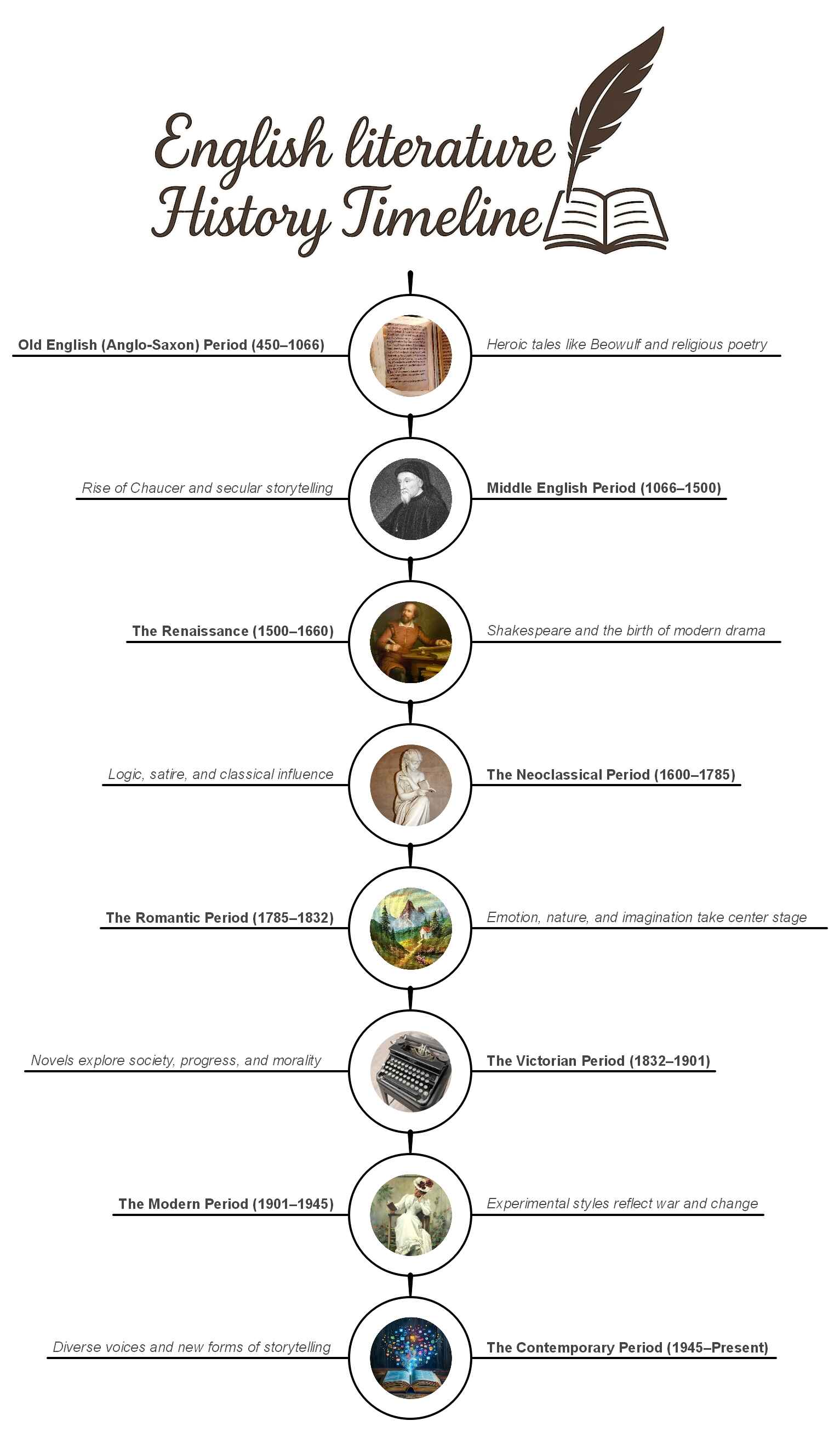History tells you what happened. Literature tells you how it felt. That's the magic of English literature; you don't just learn names and dates. You walk through castles, sit in smoky cafés, and feel heartbreak with characters from hundreds of years ago.
From ancient epics like Beowulf to modern novels about identity and technology, English literature has evolved with each generation. Every era brought new styles, values, and questions. Shakespeare made drama timeless. Dickens made poverty personal. Today's writers are reshaping what storytelling means.
Let’s explore the eight periods of English literature, one by one.In this article
English Literature History Timeline
The timeline of English literature is like a journey through time. It starts in the 5th century and continues to today. Each period tells us how people lived, thought, and dreamed.
Old English was bold and heroic. The Renaissance was full of creativity. The Victorians explored society and morality. In every era, writers captured the spirit of their time and left their mark on the world.
1. Old English (Anglo-Saxon) Period (450-1066)
Let's go way back- to a time before Shakespeare, before printing presses, even before England was really "England."
The Old English period was when Germanic tribes (Angles, Saxons, and Jutes) invaded Celtic lands. The language was rough and raw, and most stories were passed down by word of mouth. Think warriors, dragons, and honor. Beowulf is the big star here, with its epic battles and monster-slaying hero.
This was also a deeply religious time. Many texts were written by monks translating Latin scriptures. A few poetic voices stand out; like Caedmon and Cynewulf - who blended faith with the old heroic spirit.
2. Middle English Period (1066-1500)
In 1066, the Normans invaded, and English changed forever. The language became softer and more familiar to our modern ears. So did the literature.
Religious texts still dominated early on, but slowly, writers began telling more worldly stories. By the 1300s, secular themes blossomed. Enter Geoffrey Chaucer with The Canterbury Tales, full of lively characters and juicy gossip from a group of travelers.
Other gems? Sir Gawain and the Green Knight mixes Arthurian knights with mystical green giants. It's a period of transformation; language, literature, and identity all started evolving fast.
3. The Renaissance (1500-1660)
The Renaissance - a fancy word for "rebirth." This was when English literature really found its voice. Big emotions, big ideas, and even bigger drama.
This age is golden thanks to one name: Shakespeare. But he wasn't alone. Writers like Christopher Marlowe, Edmund Spenser, and Ben Jonson filled theaters with passionate plays and beautiful poetry. It was the age of Hamlet, Othello, and Macbeth.
This period is split into several mini-ages; Elizabethan, Jacobean, Caroline, and Commonwealth. Each brought new voices and styles. Public theaters thrived - until the Puritans shut them down. But even during censorship, great minds like John Milton (Paradise Lost) kept writing.
4. The Neoclassical Period (1600-1785)
Time to bring order to the chaos. This was the age of reason, wit, and balance. Writers looked back to ancient Greece and Rome for inspiration.
Neoclassicism is all about logic and structure. No wild emotions here - just sharp satire, clever arguments, and social commentary. Think Alexander Pope's razor-sharp rhymes or Jonathan Swift's biting humor in Gulliver's Travels.
This era has three acts: the Restoration (a return to theater), the Augustan Age (a golden time for satire), and the Age of Sensibility (a softer, more emotional turn). It was also the rise of essays, journalism, and the early novel.
5. The Romantic Period (1785-1832)
Feelings took center stage. Nature spoke louder than cities. Yep, it was the Romantic period; a rebellion against cold logic and stiff rules.
Poets like William Wordsworth and Samuel Taylor Coleridge made emotion and imagination the stars. They walked in forests, gazed at lakes, and found deep meaning in the simplest moments. Their Lyrical Ballads launched a movement.
Romantics loved mystery and the supernatural too. Mary Shelley gave us Frankenstein, and Gothic writers like Ann Radcliffe brought haunted castles and spooky thrills. This was a deeply human era full of passion, wonder, and rebellion.
6. The Victorian Period (1832-1901)
Big novels. Big emotions. Big changes. The Victorian era was all about progress; trains, factories, and social reform - and literature of course.
Charles Dickens led the charge. He wrote stories that were dramatic, funny, and deeply human. Books like Oliver Twist and Great Expectations are exciting and full of heart. The Brontë sisters added mystery and passion. Poets like Tennyson and Christina Rossetti made verse rich and emotional.
Writers tackled poverty, love, science, and faith. They questioned traditions and championed the underdog. Victorian literature gave us some of the most beloved books ever. And it still shapes how we see the world today.
7. The Modern Period (1901-1945)
This was a time of big change. Writers stopped following old rules. After the strict style of the Victorian era, modern writers wanted to do things differently. They said, "Let's try something new." And they did. Their stories and poems were bold, fresh, and full of new ideas.
The Edwardian and Georgian periods at the start still felt a little traditional. Writers like E.M. Forster explored class and connection, while Georgian poets admired nature's beauty. But then came war—and everything changed.
Enter modernism. Literature got bold, fragmented, and wildly creative. Virginia Woolf dove deep into the human mind. James Joyce played with language like a puzzle. T.S. Eliot's The Waste Land was messy, powerful, and honest. The world was broken, and literature captured every crack.
8. The Contemporary Period (1945-Present)
This is the literature that feels closest to home. After World War II, writers began to question everything - truth, power, identity, and even how stories are told.
Postmodernism added irony and imagination. Authors like George Orwell and Margaret Atwood painted chilling futures. Others broke storytelling rules altogether. Plays, poems, and novels began to reflect new voices - Black, Indigenous, queer, global. Suddenly, everyone had a story, and literature became a mosaic.
Now in 2025, stories live in books, blogs, podcasts, and TikToks. Writers explore AI, climate change, and what it means to be human in a fast-moving world. Literature is more alive than ever; and the story's still unfolding.
How to Make the English Literature Timeline using EdrawMind?
If you want to make a timeline and have no diagramming experience, consider trying EdrawMind. It is a beginner-friendly tool that offers hundreds of customization options and built-in templates to simplify the diagramming process.
Let's see how to make the English literature timeline with EdrawMind:
Step 1: Create a New File
- Launch EdrawMind and log in with a social account.
- You can also create a new Wondershare account for free.
- Or try out EdrawMind online on your web browser.
- Click the Create button at the top-left corner and select Local MindMap from the expanded menu to open a new file.
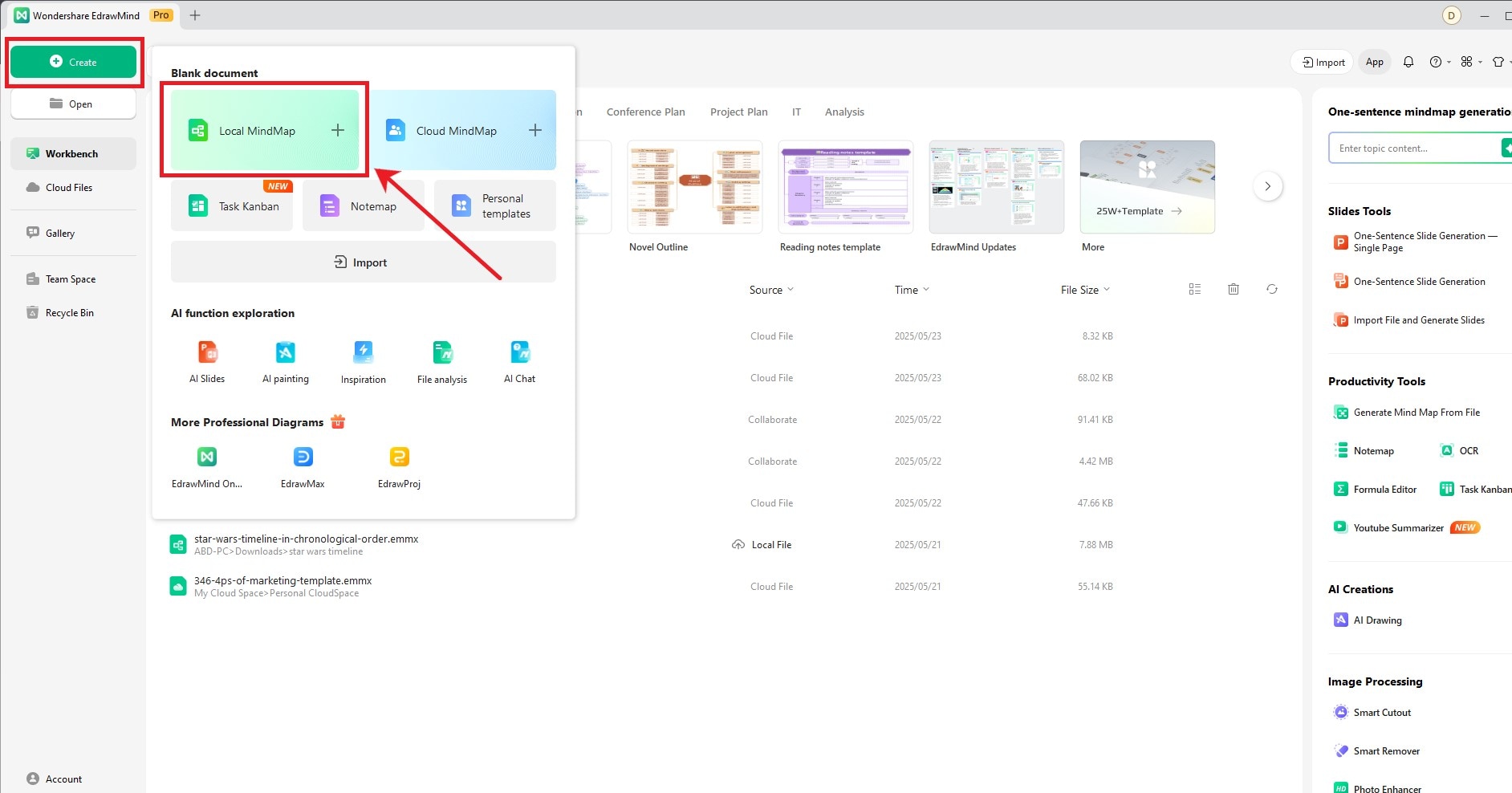
Step 2: Switch to Timeline Layout
- Select the Main Idea.
- Click Layout from the floating menu.
- Select the Timeline (down) layout from the list.
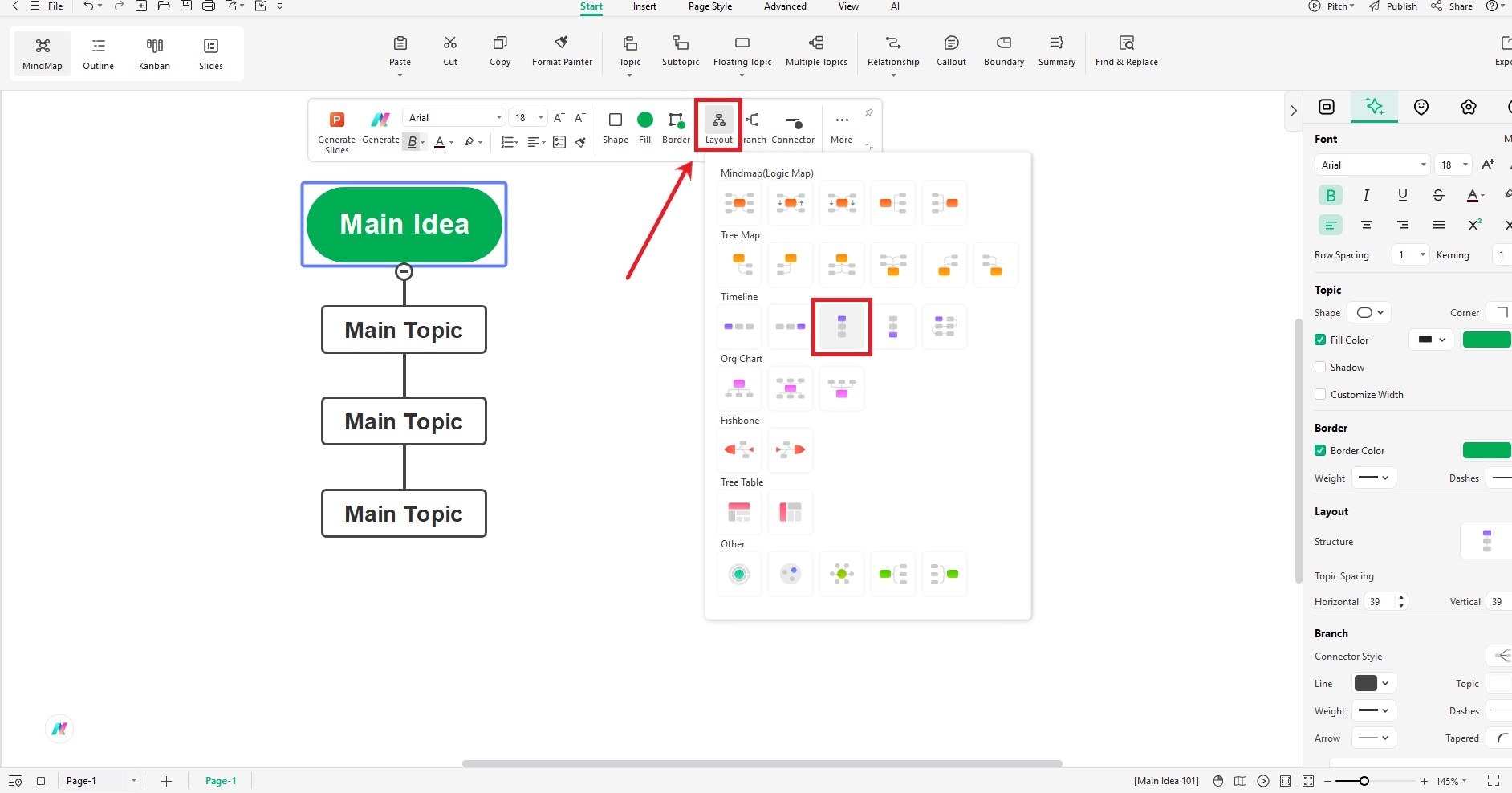
Step 3: Insert More Topics
- Click the Main Idea and go to More from the floating menu. Click Topic from the drop-down menu to add a new topic.
- Select a Main Topic and click Subtopic to create more entries.
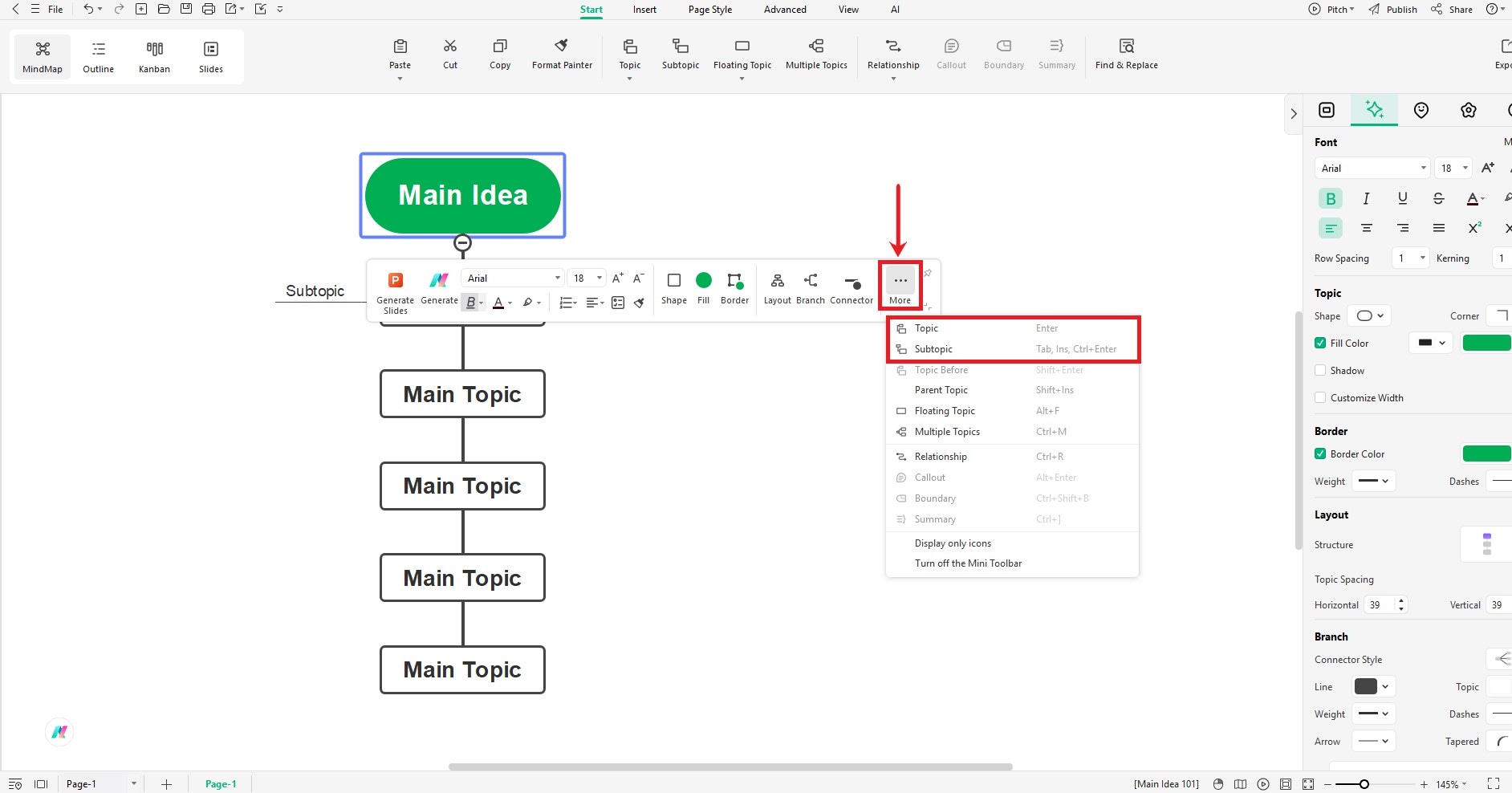
Step 4: Customize the Timeline
- Select one entry or the entire timeline at once. Use the floating menu and the right toolbar to customize the topics.
- Double-click any topic to select its placeholder text. Start typing to enter new content and remove placeholder text.
- Customize the font size, color, style, and properties from the floating menu.
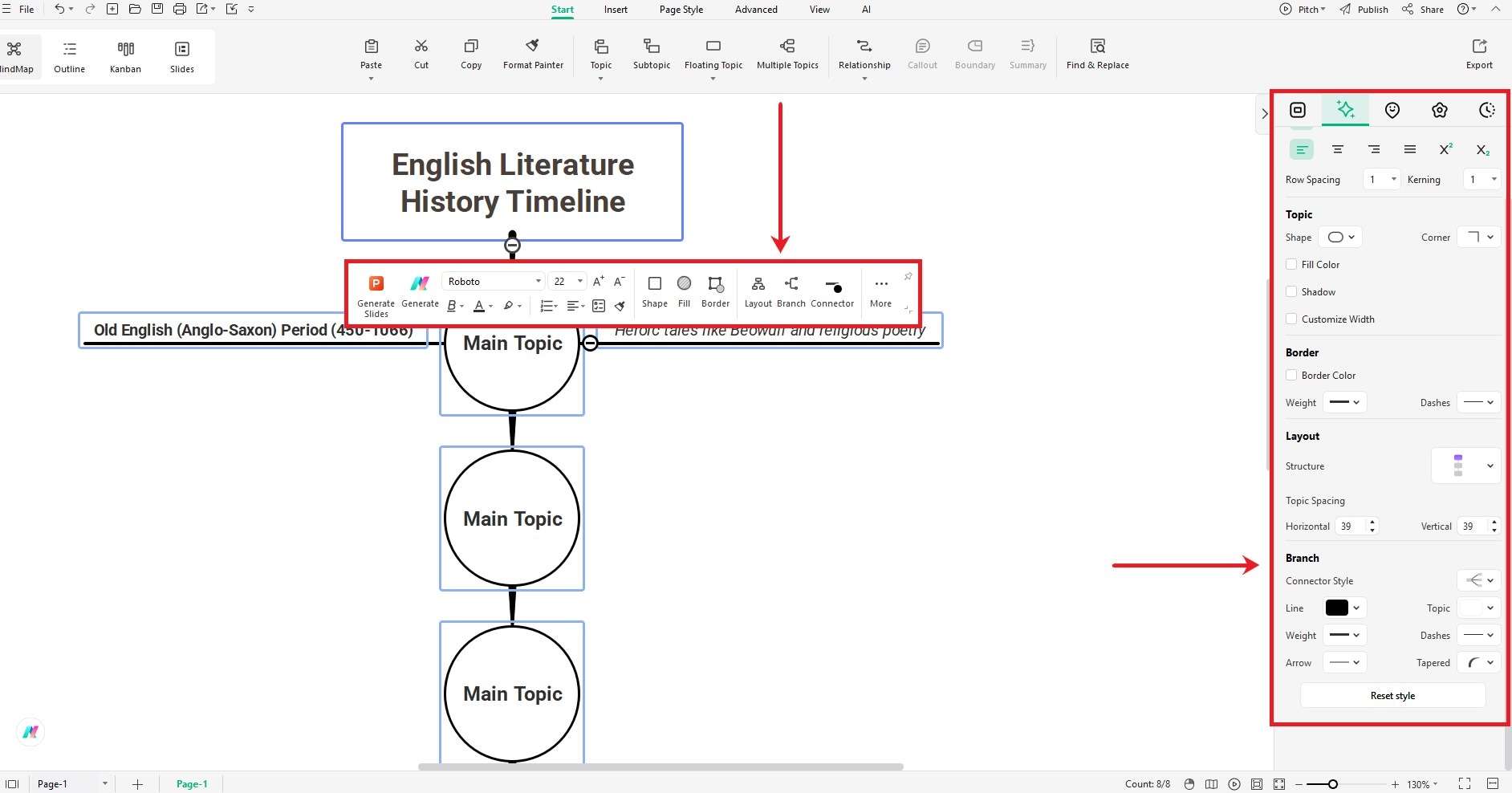
Step 5: Incorporate Images
- Download an image and open it in EdrawMind.
- Use the floating menu and the right toolbar to customize image settings.
- Drag the picture and drop it in a topic to insert it.
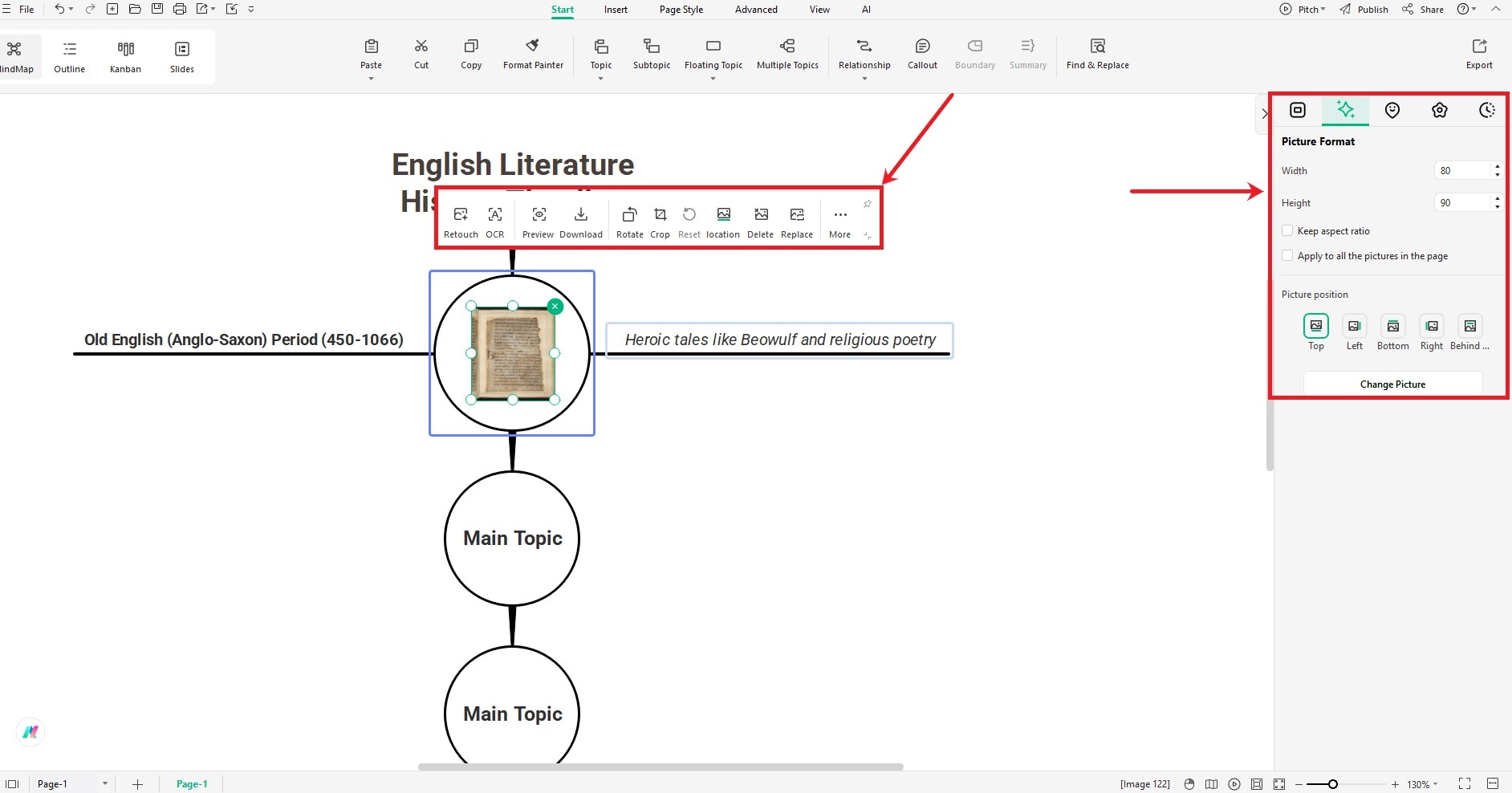
Pro-tip: Reshape Images
- Open a picture in EdrawMax.
- Select it and click Crop to shape.
- Position the image in the crop frame to cut out the unnecessary area.
- Copy and paste this image into your EdrawMind workspace.
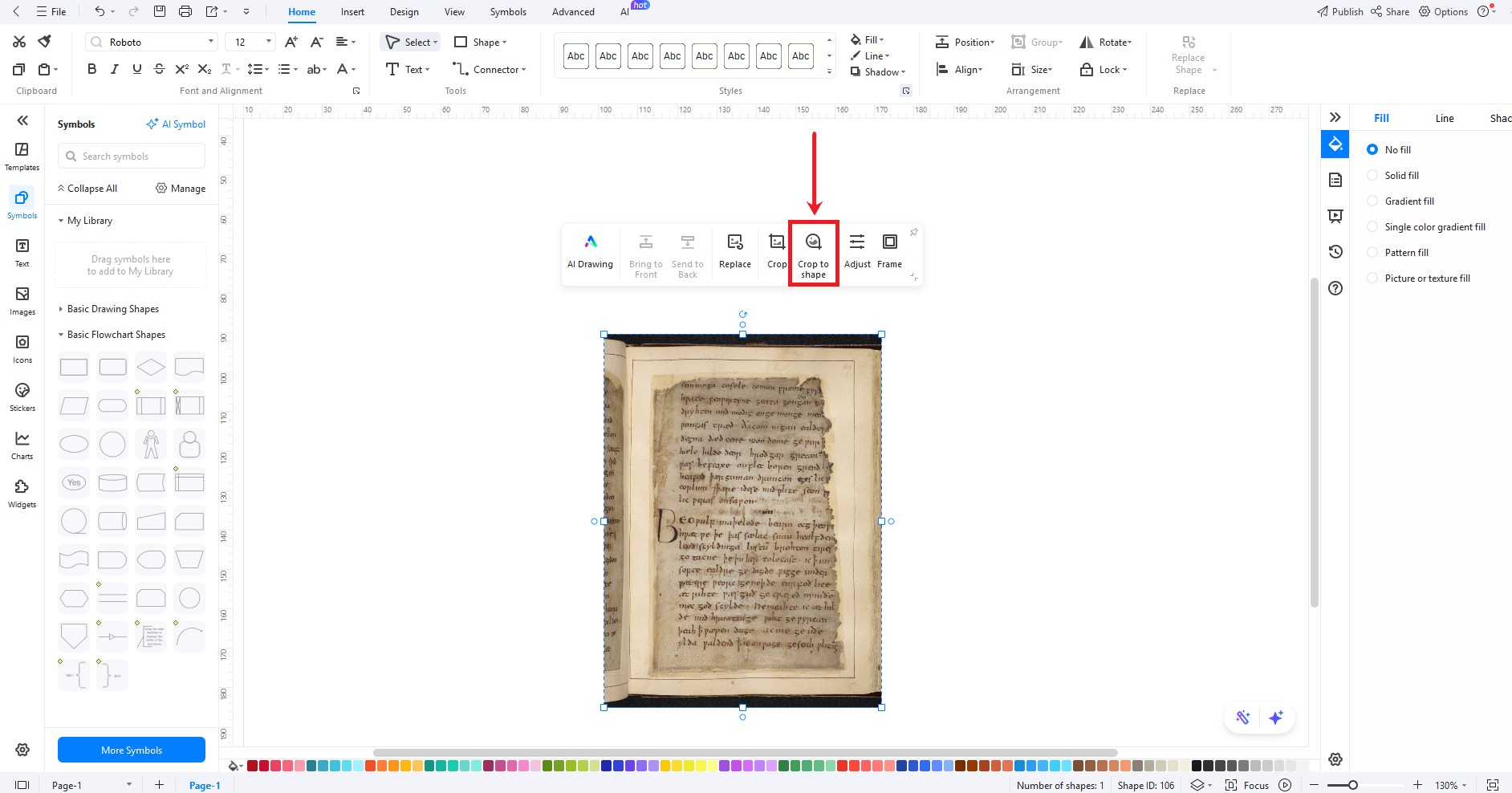
Step 6: Save & Export
- Once everything is done, click the File button at the top-left corner.
- Click Save to download the file in EdrawMind's default format.
- You can also get it in your desired format by clicking Export.
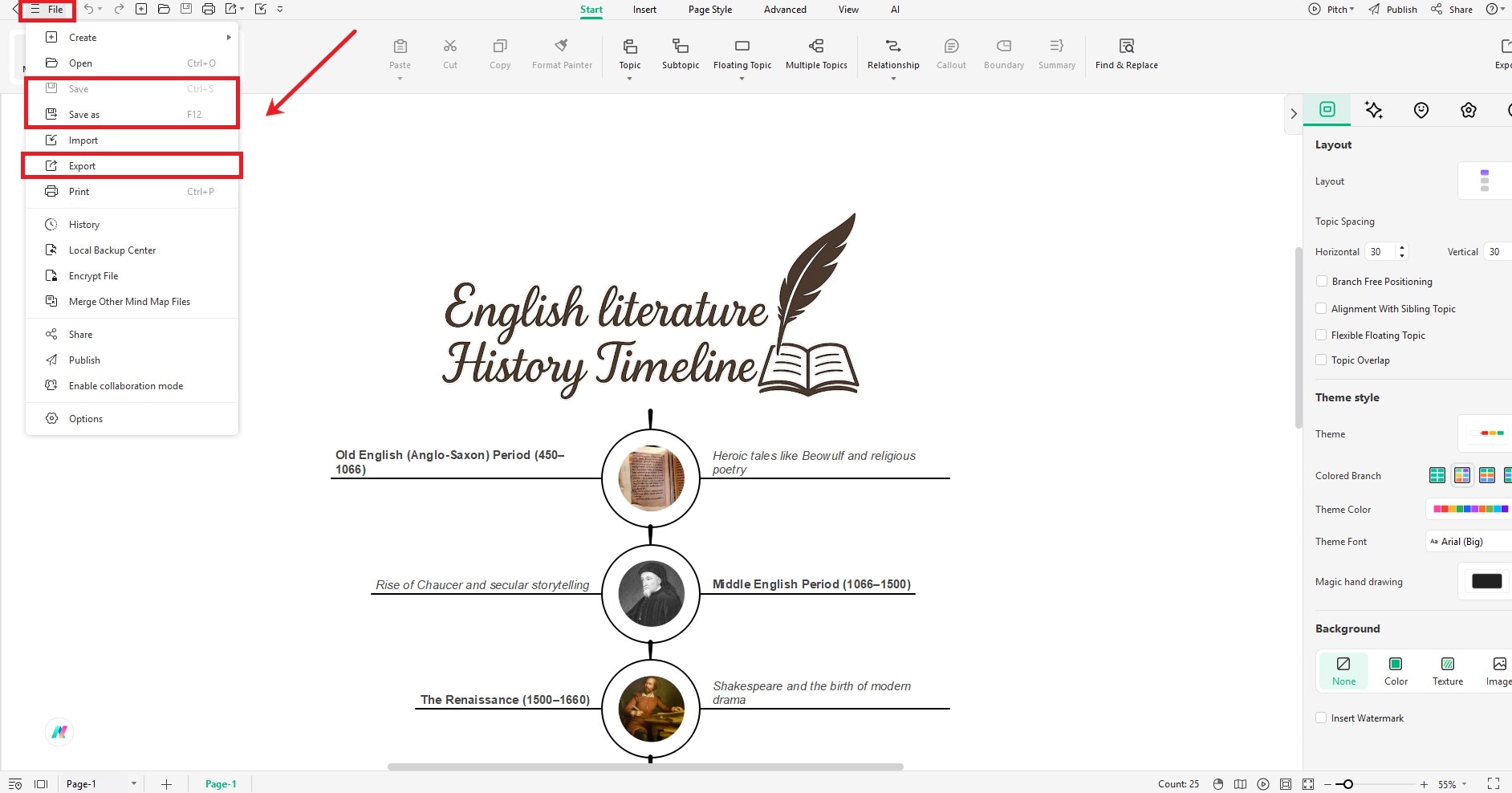
Final Thoughts
If you made it through the ages of English literature - congrats! You've just covered over 1,500 years of culture, language, and storytelling. But let's be real: it's a lot to absorb. All those eras, authors, and themes can blur together.
That's why EdrawMind is so useful. It lets you build colorful, clear mind maps and timelines that organize your thoughts and make connections easier to see. Whether you're studying for an exam or teaching a class, it's a total game-changer.
Explore EdrawMind now and learn in a way that sticks



